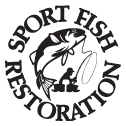CONTACT US:
Florida Fish and Wildlife
Conservation Commission
Fish and Wildlife
Research Institute
100 Eighth Avenue SE
St. Petersburg, Florida 33701
727-896-8626
|
|
|
City of Jacksonville
Parks and Recreation
214 N. Hogan Street
Third Floor
Jacksonville, Florida
32202
904-630-2489
|
|
|


|
|
This project was funded in part by a grant awarded by the and .
|

|
|
Additional funding for this project was obtained through the .
|
|
|
 |
Florida's state parks, managed by the Florida Department of Environmental Protection, provide boaters and anglers a wealth of opportunities to experience all Nassau and Duval Counties have to offer. Boaters can visit the barrier islands that compose Fort Clinch, Amelia Island, Big Talbot Island and Little Talbot Island State Parks. Shore-based fisherman can take advantage of the George Crady Bridge Fishing Pier and try to catch "the big one". Paddlers can launch their canoe or kayak at many of these state parks and travel up and down numerous coastal creeks and rivers.
For more information about Florida's state parks, please visit the online guide to Florida's state parks.
|
Fort Clinch State Park
A part of the park system since 1935, Fort Clinch is one of the most well-preserved 19th century forts in the country. Although no battles were fought here, it was garrisoned during both the Civil and Spanish-American wars. During the 1930s, the Civilian Conservation Corps began preserving and rebuilding many of the structures of the abandoned fort. Daily tours with period reenactors depicting garrison life bring the fort to life for visitors. Sunbathing, swimming, and beachcombing are popular activities at the beach. Anglers can fish from the pier or take advantage of excellent surf fishing. Hikers and bicyclists can enjoy a six-mile trail through the park. Self-guided nature trails provide opportunities to learn about and observe native plants and wildlife. A full-facility campground and a youth camping area provide overnight accommodations.
|
Amelia Island State Park
An easy drive from Jacksonville, the park protects over 200 acres of unspoiled wilderness along the southern tip of Amelia Island. Beautiful beaches, salt marshes and coastal maritime forests provide visitors a glimpse of the original Florida. Amelia Island State Park is one of the few locations on the east coast that offers horseback riding on the beach and riding tours along the shoreline. anglers can surf fish along the shoreline or they can wet their lines from the mile-long George Crady Bridge Fishing Pier which spans Nassau Sound. Visitors can stroll along the beach, look for shells or watch the wildlife.
|
George Crady Bridge Fishing Pier
Located in Jacksonville, this one-mile, pedestrian-only fishing bridge spans Nassau Sound and provides access to one of the best fishing areas in Northeast Florida. Anglers catch a variety of fish, including whiting, jacks, drum and tarpon. Access to the bridge is through Amelia Island State Park.
|
Big Talbot Island State Park
Located on one of Northeast Florida's unique sea islands, Big Talbot Island State Park is primarily a natural preserve providing a premier location for nature study, bird-watching, and photography. Explore the diverse island habitats by hiking Blackrock Trail to the shoreline, Big Pine Trail to the marsh or Old Kings Highway and Jones Cut through the maritime forest. Launch a boat from the north end of the island to fish and tour the salt marsh or rent a kayak and take a guided paddle tour. Visit The Bluffs and enjoy a picnic at one of the pavilions overlooking the water or take a quick stroll down the trail to Boneyard Beach. The unique beach is famous for the salt-washed skeletons of live oak and cedar trees that once grew near the shore.
|
Little Talbot Island State Park
With more than five miles of beautiful, white sandy beaches, Little Talbot Island is one of the few remaining undeveloped barrier islands in Northeast Florida. Maritime forests, desert-like dunes and undisturbed salt marshes on the western side of the island allow for hours of nature study and relaxation. The diverse habitats in the park host a wealth of wildlife for viewing, including river otters, marsh rabbits, bobcats and a variety of native and migratory birds.
Surrounding surf and tidal streams present excellent fishing for bluefish, striped bass, redfish, flounder, mullet and sheepshead. Other popular park activities include hiking, kayaking, beachcombing, surfing and picnicking. Beachside picnic pavilions are available for use by park visitors and can be reserved in advance for a fee. A full-facility campground is located along the eastern salt marshes of Myrtle Creek. Kayak rentals, guided paddle tours and Segway tours are available.
|
Fort George Island Cultural State Park
Native Americans feasted here, colonists built a fort, and the Smart Set of the 1920s came for vacations. A site of human occupation for over 5,000 years, Fort George Island was named for a 1736 fort built to defend the southern flank of Georgia when it was a colony. Today's visitors come for boating, fishing, off-road bicycling, and hiking. A key attraction is the restored Ribault Club. Once an exclusive resort, it is now a visitor center with meeting space available for special functions. Behind the club, small boats, canoes, and kayaks can be launched on the tidal waters.
|
Pumpkin Hill Creek Preserve State Park
East of Jacksonville's skyscrapers and west of the beaches, this state park protects one of the largest contiguous areas of coastal uplands remaining in Duval County. The uplands protect the water quality of the Nassau and St. Johns rivers, ensuring the survival of aquatic plants and animals, and providing an important refuge for birds. Wildlife is abundant and ranges from the threatened American alligator to the endangered wood stork. Equestrians, hikers, and off-road bicyclists can explore five miles of multi-use trails that wind through the park's many different natural communities. The park has a canoe/kayak launch accessible by a 500 foot portage to the marshes. Located off I-95 or 9A, head east on Heckscher Drive. Turn north on New Berlin Road, then east on Cedar Point Drive. Turn north on Pumpkin Hill Road. Trailhead parking is approximately one mile on the left.
|
If you have any questions, comments, or suggestions about this Web site, please e-mail us at Boating_Guides@MyFWC.com.
Would you like to receive notices of changes to this Web site and the Boating and Angling Guide to Nassau and Duval Counties? If so, please e-mail us and include SUBSCRIBE-DUVAL in the subject line.
|



